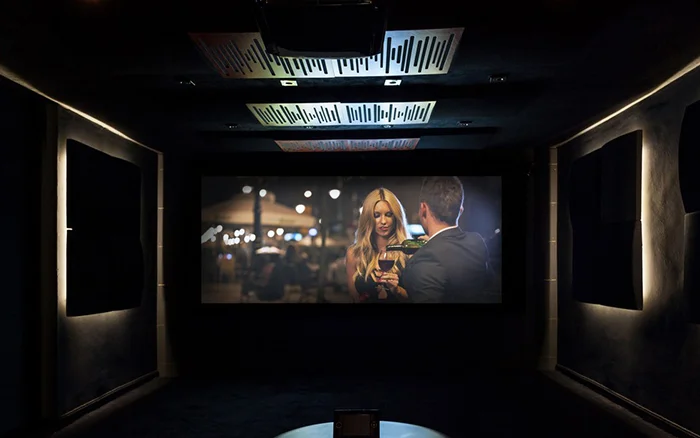
Are you confused about which projection screen to choose? Want quick information about the front and rear projection?
Here’s an ultimate guide that will help you know in-depth about what’s better for you and what will make your movie viewing experience worth it!
Optical front projection and rear projection screens provide many of the same benefits. Both projection screen types offer enhanced contrast and brightness compared to conventional non-optical projection screens.
When this is said, there are major differences. Generally speaking, optical rear projection screens generate the best image, but they also require more space.
Optical front projection screens are extremely space-effective, but also less resistant to ambient light than rear projection screens.
Here we outline the main differences between the front and rear projection so you can decide what best suits your specific requirements.
Space Usage
Front projection does not require space behind the screen, therefore leaving more floor space. (Also you must take into consideration if people or objects will be obstructing the projector at any time.) Whereas rear projection needs space for equipment and projectors behind the screen. The larger the screen, the larger the space required.
Viewing Angle
The viewing angle largely depends on the gain. Typically, the higher the gain, the narrower the optimal angle of view. However, significant improvements in the recent past have been made to widen the viewing cone with high gain coatings. Viewing angle on rear projection screens is dependent on the material’s ability to diffuse light across the viewing surface. Some materials, especially darker surfaces diffuse light more evenly across the screen.
Ambient Light
Front projection requires darkened interiors as any light source hampers the efficiency of the projector whereas contrast and color saturation are better on rear projection screens in areas with high ambient light.
Brightness Requirement
Typically, front projection screens are brighter when used in darkened rooms. Brightness, however, is highly dependent on projector output and screen gain. Since the screen transmits light in both directions, lumens are lost in rear projection. This loss of light may be offset in high ambient light situations where the front viewscreen would not perform as well.
Contrast
Contrast levels on front projection screens are easily influenced by ambient light. Gain has no effect on contrast. Rear projection is less affected by other sources of light and contrast is. Ambient light usually comes from a different direction than the projector and since the light goes through the screen rather than being reflected off of it. In rear projection, the ambient light does not affect contrast as much as in front projection.
Conclusion
To sum up, the right choice largely depends upon you – your viewing environment and choice of projector. Once you have settled on this question, you can take a look at the individual screen products from each category and see what equipment suits your environment. Some screens can be used for both front and rear projection, providing the versatility for special projects.
For more information and details visit our website: https://luminascreens.com/
- Date - December 9, 2019